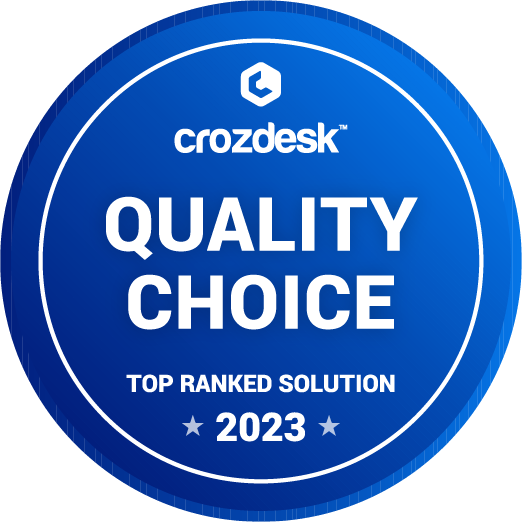PIM Real-life applications and their solutions
From our previous blog posts, you already know what PIM is and how it can help in particular industries. Today, we’ll explore real-life problems our clients face and how they can be solved with a PIM system. Hopefully, you will find our text useful and you may never experience similar problems yourself!
Challenge nr.1: Launching a new product

Issue: I work in a bank or an insurance company. I want to launch a new product to get ahead of our competition.
I spend the weekend preparing the assignment so that the product can be put on offer ASAP. But then IT says: “We’ll get down to it in a month.”
Solution: No company has a team of programmers ready to take an assignment and start working on it right away. Programmers have a job queue of their own, just like anybody else. The solution is to enable product managers to make these changes by themselves.
As a product manager, I create a new product in the PIM and define its parameters. Not just the name or some pictures, that’s the easy part. I also specify the core of the product, for instance, the price calculation method, myself.
Where it makes sense, I can create an entire new category of products. I describe their structure and create several products in this structure. From the start, this enables customers to display several possible solutions next to each other and compare their advantages and disadvantages.
The possibilities are numerous. And I am the one in control and do not have to wait for an IT design. New products are launched quickly.
Challenge nr.2: Adding new suppliers

Issue: I am an e-commerce Product Manager. I want to add new suppliers to my offer.
I have found a company supplying awesome products I wish to offer on my platform. I negotiate the terms and a contract with them … and then a team of programmers start to work hard on an interface, it costs me loads of money, I have to involve additional administrative force, and yet the supplier has not seen any of their goods on my platform anyway. Before my programmers manage to integrate one supplier, I’m already negotiating with five others. I need to integrate them fast, I’m starting to lag behind the competition.
Solution: The rules for processing the input data from suppliers can be easily entered with a few clicks. I hire a skillful intern, he or she checks what data look like on my end and on the supplier’s end, and defines conversion rules.
I import the supplier data into the test environment and run them through the conversion rules. Do they look OK? I can present them to customers. Not OK yet? I add a few rules to fix the remaining issues. I can do it myself or have a temp worker do it after a half-day training. Quickly and without waiting.
Challenge nr.3: Data quality

Issue: Suppliers deliver data so dirty that I need a whole administrative team to cleanse them.
Our e-shop is big enough to push through to our suppliers the use of our standard interface. The suppliers have promised in the contract to send the data via this interface. But what they are actually sending is a lot of nonsense. Dimensions in feet and weights in pounds. Product categorization in the German language. Prices per different units of measure. The results cannot be compared. Customers either complain or go and make their purchases elsewhere.
Solution: Data mapping and cleansing rules or value and unit conversion rules.
A standard interface is a beautiful thing. But I still need to have the option to add rules for a particular customer to work behind the interface:
- Whenever this parameter contains a certain unit of measure, this is the way to convert it,
- Translate these items from a supplier code list into these items in our system,
- This particular field can only contain these values. Or figures only. Or a text of a limited length. In the opposite case, change the status of the newly created product to “needs checking”.
These rules can neither be delivered by the suppliers themselves nor written by programmers. The rules are different for each individual supplier. That is why we need our administrators to be able to add and modify them simply and quickly
Challenge nr.4: Adding a new field
Issue: I need to add one field to the system.
I have an out-of-the-box system and I have been told by the implementor that adding a new field is not possible because they only have a few dedicated fields available and if these are used up, no additional fields can be added.
Solution: I really deserve a decent system.
Out-of-the-box systems are simple. That is a great advantage during the launch phase. And also a major complication later on, when the company has grown bigger. At a certain moment, one has to let go of an OOTB solution and build a system from specialized components based on one’s actual needs. In a PIM that gives me control over the entire product model, I can not only add new fields but also brand new categories of products and links among them. I myself can define what our product actually is.
Challenge nr.5: Employee turnover

Issue: A colleague is leaving our bank and she happens to be the one who carries all our credit products in her head. What are we going to do without her?
Solution: Yes, of course, a company’s stability cannot depend on information contained in the head of a single person. The information must be kept where anyone (having the necessary rights) can work with it. But where?
Well, for product information a PIM is just the right kind of place. The data model of a PIM must fit the company using it – it is going to be totally different for a bank, different for an e-shop, and different for a pharmaceutical distributor. In all cases, it has to support the description of the products, enable integration to other systems, and make the job easier for product managers. The colleague’s departure is no longer such a big issue because all the information is available quickly and in a clear form to the other team members.
Challenge nr.6: Price change

Issue: Suppliers change their prices and we have to constantly recalculate our selling prices.
Whenever a supplier sends us a price update, somebody on our end must calculate the new selling price. In so doing, they must take into account the purchase price, various volume and similar bonuses from the given supplier, the price of transportation, storage, repackaging, and god knows what else. And, of course, a margin.
Solution: Automatic price rules.
These are just mathematical formulas (even though sometimes complicated) and usually there are not many of them. And what else are computers good for, other than computing? The price rules automatically recalculate the price upon any change in any input item (supplier, transportation, warehouse, etc.). If any parameter falls out of the permitted limits, the rules alert us so that we can intervene. We can then decide if it is better to delete the given product rather than market it with a loss. Or we pick up a phone and act.
Mechanical jobs are for machines – humans should do creative and human work.
After the last article, we have been reminded that claiming that “ integration with external systems cannot be done by a product manager” is not completely true. The basic connection of the data flows requires a programmer, but there is a huge amount of work on setting the interface, which a product manager with business know-how can actually perform better: mapping rules, data clarity control rules, value and measurement unit conversion rules. And then there are things which only a product manager, not a programmer, can do – such as to decide which of the many suppliers will be selected to deliver the best marketing texts and pictures for a product that is supplied by everybody.

Martina Macháčková fine tunes with our clients the form of the user processes to make them intuitive so that users do not have to make a single unnecessary move. Together with clients, she designs and defines everything, from the division of roles, through the look of the screens and the user procedures to the life cycle of a product. She ensures that everything is measurable and reportable. Martina helps our clients find solutions thanks to which they will not have to struggle with the system later on. On the contrary, the system should be perceived as an unobtrusive, perfectly tuned partner allowing them to offer their customers the best products and services.




